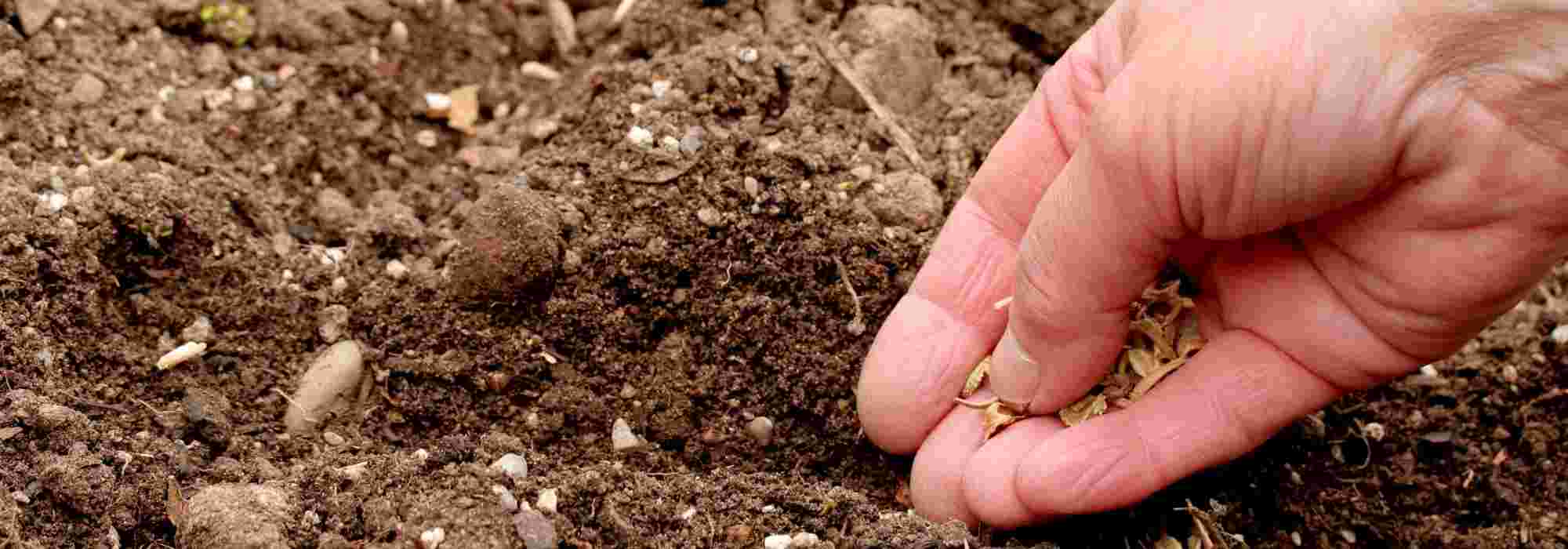
Sowing in rows or broadcasting: what is the difference?
Everything you need to know about these two methods for sowing in the vegetable garden
Contents
When cultivating your vegetable garden, sowing your seeds and seeing the first shoots appear is particularly motivating, whether you are a beginner gardener or a more experienced one. But before seeing your seeds germinate, you must first choose the right sowing method: broadcasting or in rows. Each technique has its advantages and disadvantages, related to its level of precision, ease of implementation, success rate… Whether you are a novice with your first vegetable patch or an experienced gardener looking for profitability, knowing when and why to choose one sowing method over the other can make all the difference.
Discover the differences that distinguish broadcasting from row sowing, and especially how to make your choice based on various criteria.
What is broadcasting seeds ?
Sowing by broadcasting simply means scattering seeds by hand over the entire surface of the soil, whether evenly or not. This can be done directly in a prepared plot, a vegetable patch, or even a pot containing a mix of seeds.
This sowing method recalls the very traditional gesture of farmers of yesteryear walking through the fields, scattering seeds from a bag slung at their waist with a sweeping motion. This method has existed since the first seeds were cultivated on a large scale. Today, in intensive agriculture, this sowing method has completely disappeared, replaced by tractor-drawn seeders…
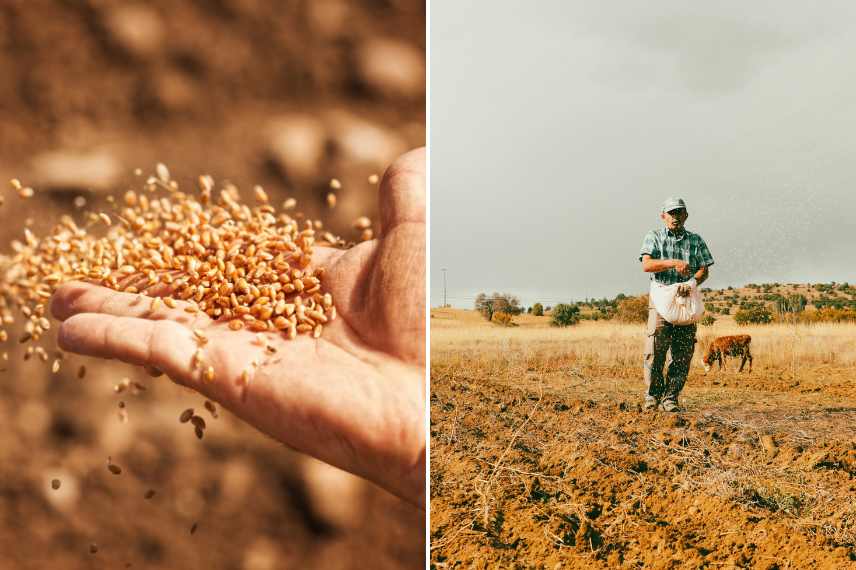
Broadcasting, an ancestral gesture
However, it is a sowing technique that is still used for lawn, green manures, and flowering meadows, especially when one wants to create a beautiful quick cover. It is a relatively simple sowing method, as almost no tools are needed. You throw your seeds, cover them with a light raking using a hoe or rake, water gently, and let nature take its course. The hardiness of certain seeds and their vigorous germination allow this method to be effective despite its imprecision. For this is certainly the main drawback.
Advantages and disadvantages of broadcasting sowing
Sowing by broadcasting can be an ideal method for certain seeds, but it does have some major drawbacks.
The advantages of broadcasting
- A quick and accessible method: broadcasting is perfectly suited for beginner gardeners or those in a hurry, as it requires little equipment and no technical know-how. You simply grab a handful of seeds and scatter them across the soil with a sweeping arm motion.
- Good coverage: for seed mixes or low-density seedlings, scattering seeds by broadcasting ensures a homogeneous coverage.
- A flexible and adaptable technique: you can add new seeds later if certain areas remain sparse. It is also possible to mix different types of seeds with similar germination needs.
The disadvantages of broadcasting
- Random distribution: if the motion is uncertain, some areas receive too many seeds while others receive too few, potentially leading to dense or empty patches.
- Longer weeding and thinning work: when everything grows randomly, it can be difficult to identify and remove weeds without damaging the plants. For a beginner gardener, it may be challenging to differentiate between adventive plants and the sown plants.
- Potential waste: small seeds, sown randomly, may not germinate or may remain on the surface and dry out.
What does sowing in rows mean?
Sowing in rows involves tracing regular furrows in the soil, placing the seeds at spaced intervals, and then lightly covering them. This method is much more rigorous, almost “geometric,” as it allows for measuring the spacing between seeds, the depth of sowing, and the width of the ranks.
It is recommended for vegetables that require precise spacing: carrots, radishes, beetroots, leeks… This precision ensures uniform growth, good aeration of the plants, and a well-organised harvest.
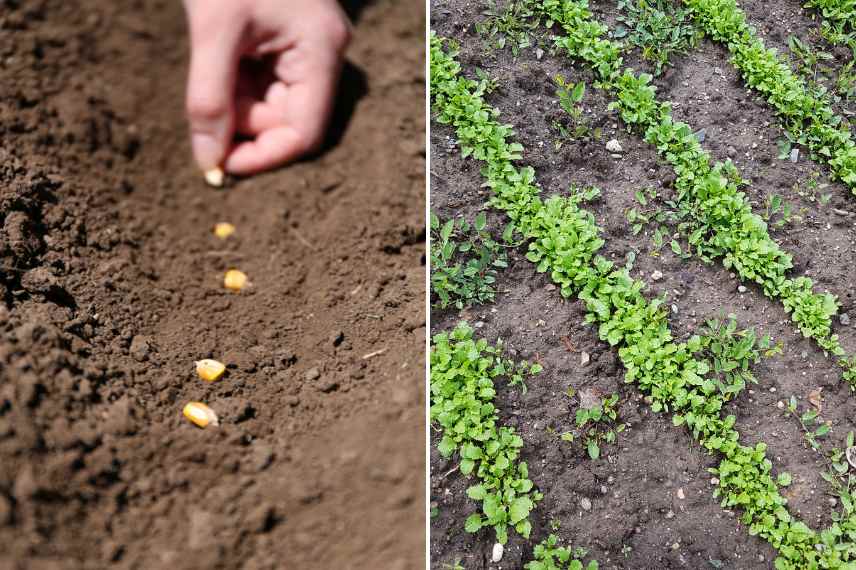
Sowing in rows optimises space
It requires a minimum of tools: a dibber, a rake, or simply a stick and a handle to trace the furrow, a ruler or your foot to measure the spacing, and a rake to cover the sowing. As for the sowing itself, it can be done by hand or with a small adjustable hand seeder that fits the size of the seeds. But once the technique is mastered, the gardener gains true control over their vegetable garden.
Advantages and disadvantages of sowing in rows
Sowing in rows offers a certain level of control, as it is significantly less random than broadcasting seeds.
The advantages of sowing in rows
- Optimised spacing: each plant has the necessary space to thrive, reducing root competition.
- Simplified maintenance: weeding, thinning, hoeing, and targeted watering are much easier, as the ranks are clearly visible and regular.
- Easy harvesting: plants are spotted more quickly, neighbours are not disturbed, and harvesting can be done in a clean and organised manner.
The drawbacks of sowing in rows
- A slower sowing process: it requires marking out lines, measuring, and sowing carefully… which can take time over large areas.
- A sowing method that requires a bit more technique: one must know the ideal spacing between seeds and the appropriate depth for each seed type.
- A somewhat intimidating technique for beginners: the precision required can discourage some gardeners, especially novices, who prefer a more instinctive approach.
How to choose the right sowing method according to your needs?
It’s not always easy to know which method to adopt, especially when you’re starting out or looking to optimise your vegetable garden. Fortunately, a few simple criteria can guide you.
The type of plant
This is often the number one factor. For small seeds that do not require precise spacing, such as lamb’s lettuce, certain salads like the various types of lettuce, mesclun, green manures, or wildflowers, broadcasting the seeds is perfect. Conversely, for root vegetables like carrots, radishes, turnips, or beetroots, it’s better to opt for sowing in rows, which allows for good development without competition.
The space and time available
A large garden or an entire plot to cover? Broadcasting will be quicker. But if you have a small vegetable patch or containers, sowing in rows will make your life easier when it comes to weeding or harvesting.
The level of experience
If you are a beginner gardener, you might be advised to try broadcasting, which is more intuitive. For more experienced gardeners or those who are a bit perfectionist, sowing in rows will offer better yields and smoother maintenance.
Our little extra tips
- Test both methods! In a small strip, sow by broadcasting, in another in rows, and compare growth, maintenance, and yield.
- Take some notes: date, weather, seed size, type of soil… to better adjust next time.
- Combine the two: some vegetables can be sown in rows, while the surrounding flowers bloom thanks to broadcasting.
- Make seed mixes to optimise space and yield. You can perfectly mix salad and radish seeds or carrot and radish seeds in a broadcast sowing.
- To achieve a more homogeneous sowing, whether in rows or by broadcasting, feel free to mix your seeds with very fine sand or couscous seeds.
And if you are really unsure of your technique, there are now seed tapes. You dig your furrow, unroll your tape, close the furrow, gently compact it, and water.
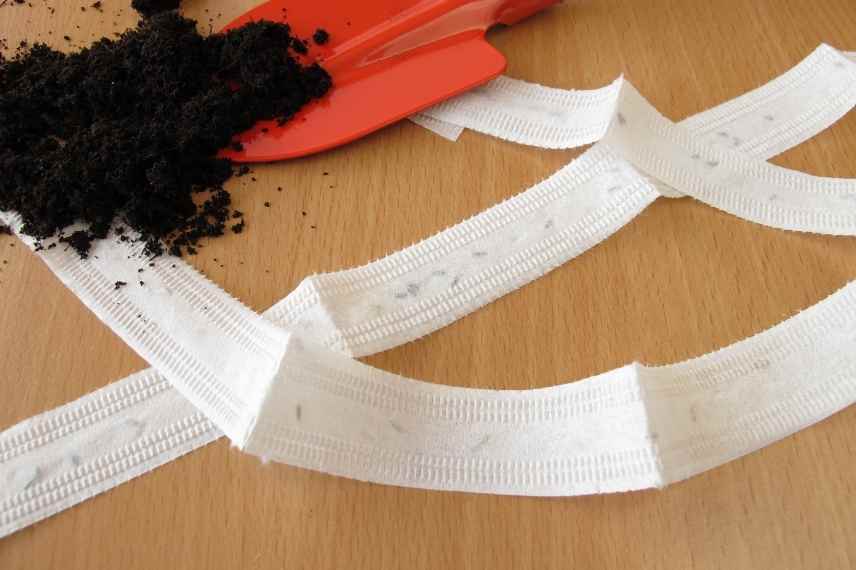 Seed tapes are perfect for gardeners who are unsure of themselves
Seed tapes are perfect for gardeners who are unsure of themselves
- Subscribe!
- Contents
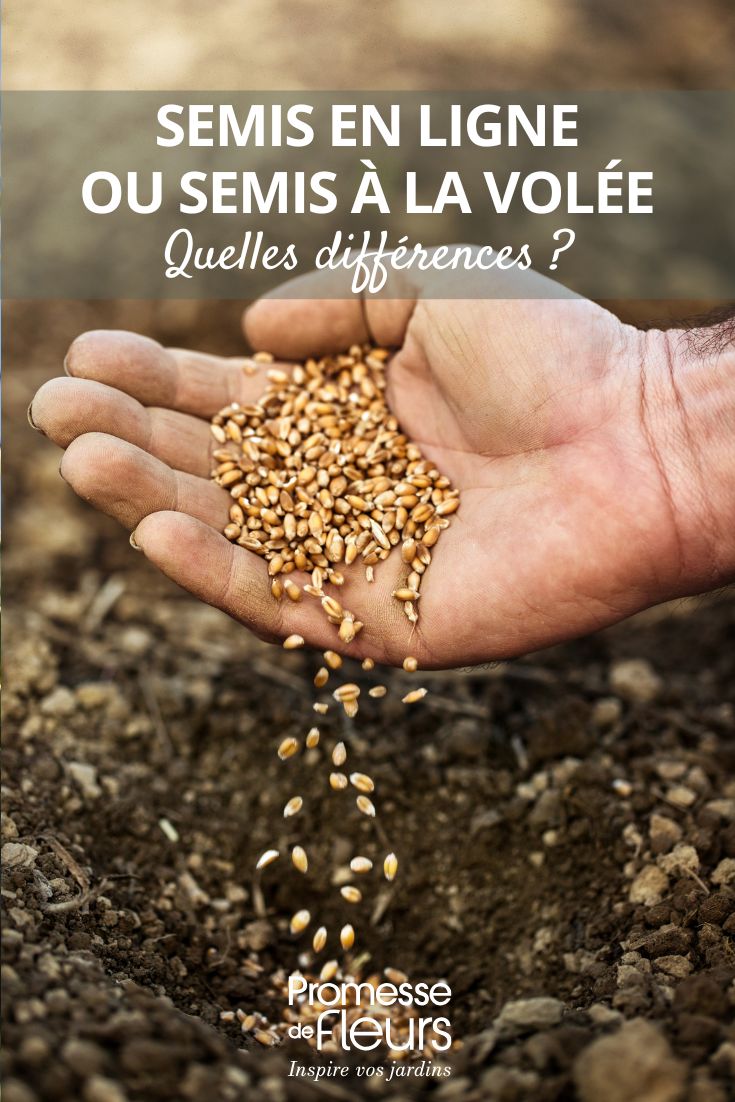































Comments